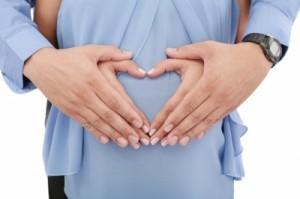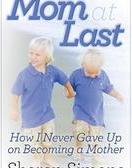Fertility in women over the age of 40 is one of the most challenging areas in the field of fertility. The reason for this is the natural decline in fertility as women age. Not only do egg supplies plummet with age, but also the quality of the eggs. By quality we refer to the egg’s ability to create a chromosomally normal embryo, and as women age that declines.

Medical science currently has no specific test for egg quality, but we do know that it closely correlates with age. We can actually estimate egg counts. That’s called “ovarian reserve testing.” There are several different ways of testing a woman’s remaining ovarian reserve. The most common way is by testing the blood for the hormone FSH (follicle stimulating hormone) on the second or third day of a woman’s period. A high FSH number implies low egg counts. We can also visualize the ovaries through the use of ultrasound, and count the resting egg follicles within the ovaries. If we see a lot of resting egg follicles that’s a good sign; if we see a low number that’s a bad sign and may indicate a lower ability for that woman to achieve pregnancy.
There are different strategies used to help women conceive who are over the age of 40. In one strategy we administer injections of the hormone FSH to recruit multiple eggs from the ovaries. We either combine that with artificial insemination or In Vitro Fertilization- the idea being by recruiting more eggs and more embryos we will have a greater chance of pregnancy. If IVF fails, another treatment called “ZIFT”, or zygote intrafallopian transfer, can be used. The idea here is that by placing the embryo directly into the fallopian tube we optimize the environment for that embryo to grow, and therefore help the embryo grow to a more advanced state.
For women who no longer have viable eggs there is also the option of using donor eggs. With egg donation, the menstrual cycles of an egg donor and an intended mother are synchronized. The egg donor takes shots to induce the growth of multiple egg follicles. The eggs are then retrieved from the donor and mixed with sperm to create embryos.
The embryos are then transferred to the intended mother for pregnancy. Egg donors are available through a variety of egg donation agencies. Intended parents can actually see pictures of the egg donor candidates. Egg donors are tested psychologically, genetically, and put through a battery of tests for infectious diseases. The success rate from egg donation is very high- over 50 % when we do an embryo transfer. And it is for that reason that we only transfer one embryo at a time when using donor-provided eggs. We offer this therapy, of egg donation, to women up to age 50 and even beyond in certain select cases, so long as the woman is healthy. The uterus doesn’t age, it’s the ovary that ages.
About the Author
Dr. John Jain is a Board-certified reproductive endocrinologist and a pioneer in the field of reproductive medicine. He was federally funded by the National Institutes of Health and was appointed to the National Ethics Committee of the American College of Obstetricians. Dr. Jain has twenty years of academic experience including a decade as decorated professor of Obstetrics and Gynecology at the USC Keck School of Medicine. Which has given him extensive experience in the area of fertility and egg banks.
Image courtesy of David Castillo Dominici / FreeDigitalPhotos.net

